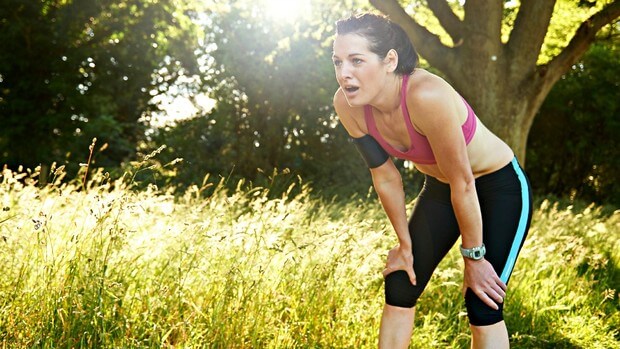Learn to breathe in order to improve performance

Anouk Garnier, OCR vice-world champion in 2018, is also an expert in breathing. When we look at her performances it is clear that this athlete has understood everything about the benefits of knowing how to breathe during an effort.
Anouk, can we learn to control our breath?
Yes, with regular breathing work. This makes it possible to better manage the volume of oxygen and to have a faster recovery and to more easily follow the exercises with a high intensity. For example in obstacle course this saves time on the race / obstacle transitions. It is also very useful in CrossFit in the transitions between the different exercises during a WOD.
What are the advantages of breathing through the stomach and avoiding breathing through the chest?
It is said that chest breathing is the so-called panic breathing. In an effort, when the breath is naturally accelerating we breathe through the thorax to inflate the lungs and seek more oxygen.
There are many advantages to breathing through “the stomach”, we also speak of diaphragmatic breathing.
The first advantage is to bring into play the parasympathetic nervous system which has the role of slowing down the heart rate, so this can help to better manage your effort.

The parasympathetic system also plays a role in digestion.
The second advantage is that less strain is placed on the muscles of the upper back, the neck … During chest breathing, the muscles of the upper back are called upon, which are sometimes responsible for unpleasant tensions. Breathing through the belly does not require them and can have a “relaxing” effect on the muscles of the lower back in particular.
Lastly, the ultimate advantage: when we have a load on the thoracic part (kettlebell or front rack bar for example) we cannot breathe through the thorax because the load prevents us from doing so.
Learning to breathe through the stomach allows you to always be well oxygenated in this kind of training or in competition.
In the practice of the Hardstyle Kettlebell, which I use to develop my strength (Russian style) we use this diaphragmatic breathing to create pressure with the inspired air, better activate the center of the body and better protect the spine under the charges. We create ourselves like a natural weight belt.
Should you adapt your breathing to the race?
Breathing must be different depending on the intensities and the energy channels that you are working on.
In the aerobic zone we should be able to breathe only through the nose to be sure we are in the correct zone.
And the more we accelerate and we enter an anaerobic zone, the more we will breathe through the mouth to have more oxygen.
But ideally you should always breathe in through your nose also if you bring in oxygen through your nose and your mouth you have a bigger volume.

What are the techniques for better breathing?
I have exertional asthma. Indeed, in the intense efforts my bronchi narrow and I bring in less oxygen. It was a big problem I had on competitions.
Last year I worked on breathing protocols, in my trainings and during meditation. I also trained on breathing through the nose, especially with the “cool” runs or training I do them only in nasal breathing, sometimes I put water in my mouth to force myself. In intense efforts, when I start to lack oxygen and enter an anaerobic system, I use more nasal breathing which allows for a larger volume of oxygen. With this method, we manage our intensities better and we improve on the running.
I also took an online Power Speed Endurance training course created by Brian Mackenzie (who developed Crossfit Endurance) among others, and incorporated breathing protocols into my daily workouts.
These protocols allowed me to have stronger respiratory muscles and to have a larger volume of oxygen on inspiration and a larger volume of CO2 expired.

